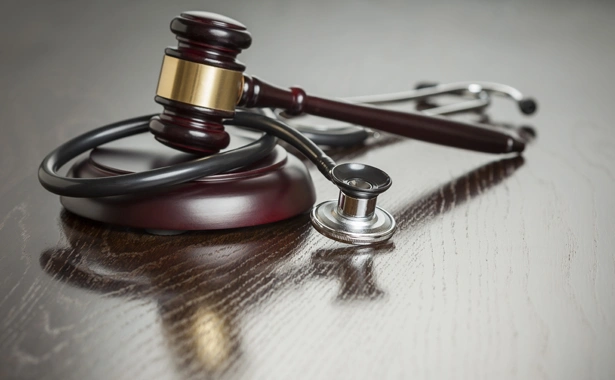Contents
Criminal negligence is a serious issue that can have devastating consequences for everyone involved. Understanding what criminal negligence entails and how it’s evolving in 2024 is crucial for staying on the right side of the law. Let’s dive into the ins and outs of criminal negligence, and explore some real-life examples to shed light on this important topic!
Understanding Criminal Negligence
Definition of Criminal Negligence
Criminal negligence occurs when an individual’s reckless disregard for the safety and well-being of others results in harm or potential harm. Unlike civil negligence, which deals with breaches of duty causing damage, criminal negligence involves a higher degree of carelessness that justifies criminal penalties. It’s not just about making a mistake; it’s about taking actions (or failing to take actions) that any reasonable person would recognize as dangerously irresponsible. For instance, if a construction site manager ignores safety protocols, leading to a worker’s injury, this can be seen as criminal negligence due to the blatant disregard for the worker’s safety.
Distinguishing Criminal Negligence from Civil Negligence
Understanding the nuances between criminal and civil negligence is essential. Civil negligence involves a failure to exercise reasonable care, resulting in damages or injury to another party, usually resolved through compensation. In contrast, criminal negligence is a more severe breach, where the negligence is so egregious that it endangers human life or safety, leading to criminal charges.
Consider a scenario involving a distracted driver. If the driver’s distraction causes a minor fender-bender, this might be addressed as civil negligence. However, if the same driver’s distraction leads to a fatal accident, this can escalate to criminal negligence due to the reckless endangerment of life. The key difference lies in the severity and the potential or actual harm caused, with criminal negligence requiring proof of gross disregard for safety.
By grasping these definitions and distinctions, legal professionals and the public can better understand the gravity of criminal negligence and its implications in 2024.
Legal Standards for Criminal Negligence
Elements Required to Prove Criminal Negligence
To establish criminal negligence, the prosecution must prove several critical elements beyond a reasonable doubt. First, there must be a duty of care owed by the defendant to the victim. This means that the defendant had a responsibility to act (or refrain from acting) in a way that ensures the safety of others. For example, a doctor has a duty of care to their patients.
Second, there must be a breach of that duty. The defendant’s actions (or lack thereof) must demonstrate a significant deviation from the standard of care that a reasonable person would exercise in similar circumstances. This breach must be so severe that it can be considered a gross deviation from what is acceptable.
Third, it must be shown that the breach of duty directly caused harm or posed a significant risk of harm. There must be a clear link between the defendant’s actions and the injury or danger experienced by the victim. Lastly, the harm or risk of harm must be substantial enough to warrant criminal liability, not just minor or trivial.
The Role of Intent in Criminal Negligence
Unlike many other criminal offenses, criminal negligence does not require intent to harm. Instead, it focuses on the defendant’s failure to perceive a substantial and unjustifiable risk that results in significant harm. This makes proving criminal negligence complex, as it involves assessing the defendant’s mindset and the reasonableness of their actions.
Intent, or the lack thereof, differentiates criminal negligence from crimes that require a purposeful or knowing state of mind. In cases of criminal negligence, the prosecution does not need to prove that the defendant intended to cause harm, only that they should have been aware of the risks their actions posed. For instance, a caregiver who leaves a vulnerable patient unattended in dangerous conditions may not intend harm but still faces criminal negligence charges if their neglect leads to injury or death.
This emphasis on the failure to recognize risk rather than intent underscores the serious nature of criminal negligence. It holds individuals accountable for their actions, ensuring that grossly irresponsible behavior that endangers others is met with appropriate legal consequences.
By understanding these legal standards, lawyers can better navigate cases involving criminal negligence, ensuring that justice is served in line with contemporary legal expectations.
Recent Changes and Trends in Criminal Negligence Law
New Legislation in 2024
2024 has seen significant legislative changes aimed at tightening the legal framework surrounding criminal negligence. Legislators have recognized the need to adapt laws to address modern societal and technological advancements. One notable change is the introduction of stricter regulations for industries where negligence can have severe consequences, such as healthcare, construction, and transportation.
For instance, new laws mandate rigorous safety protocols and regular compliance checks in workplaces, with harsher penalties for employers who fail to meet these standards. The healthcare sector, in particular, has seen updated regulations to ensure patient safety, including mandatory reporting of medical errors and stricter oversight of medical practices. These changes reflect a growing commitment to preventing harm through proactive measures rather than reactive punishment.
Additionally, the rise of autonomous vehicles has prompted new legislation addressing the responsibilities of developers and operators in the event of an accident caused by system failures. This ensures that accountability for negligence extends to emerging technologies, safeguarding public safety in an evolving landscape.
Key Court Rulings in 2024
Several landmark court rulings in 2024 have further shaped the interpretation and enforcement of criminal negligence laws. Courts have increasingly focused on the broader implications of negligence, emphasizing the duty of care owed by individuals and organizations in positions of authority or influence.
One significant case involved a tech company whose faulty software led to widespread data breaches and subsequent financial harm to users. The court ruled that the company’s failure to implement adequate security measures constituted criminal negligence, setting a precedent for similar cases in the future. This ruling highlights the expanding scope of criminal negligence to include not only physical harm but also significant economic and psychological impacts.
Another key ruling addressed the responsibilities of autonomous vehicle operators. In a case where a self-driving car malfunctioned, causing a fatal accident, the court held both the manufacturer and the operator accountable for criminal negligence. This decision underscored the importance of thorough testing and transparent communication of potential risks associated with new technologies.
These court rulings reflect a trend towards holding entities to higher standards of accountability, particularly in sectors where negligence can have far-reaching consequences. By doing so, the legal system aims to foster a culture of responsibility and prevent negligence through stringent enforcement and precedent-setting judgments.
The evolving legal landscape in 2024 underscores the importance of staying informed about recent changes and trends. Legal professionals must adapt to these developments to effectively navigate cases involving criminal negligence, ensuring that justice is served in an increasingly complex and interconnected world.
Common Examples of Criminal Negligence
Medical Malpractice Cases
Medical malpractice is a prevalent example of criminal negligence. When healthcare professionals fail to meet the established standards of care, patients can suffer severe consequences. Criminal negligence in medical settings often involves gross deviations from accepted medical practices, leading to significant harm or death.
For example, a surgeon who performs an operation while intoxicated or a doctor who prescribes the wrong medication due to carelessness can be charged with criminal negligence. In 2024, stricter regulations and enhanced reporting requirements have been implemented to mitigate such risks. Hospitals are now required to conduct regular training sessions and competency assessments to ensure that all medical staff adhere to the highest standards of care. Additionally, the use of advanced medical case management software helps in monitoring and reducing errors, further protecting patient safety.
Workplace Safety Violations
Workplace safety violations are another significant area where criminal negligence can occur. Employers have a duty to provide a safe working environment, and failure to do so can lead to serious injuries or fatalities. Criminal negligence in this context involves blatant disregard for safety protocols and standards.
For instance, an employer who knowingly neglects to repair faulty equipment, resulting in an employee’s injury, can be held criminally negligent. In 2024, regulatory bodies have increased inspections and imposed stricter penalties for safety violations. Companies are now more accountable for maintaining safe working conditions, with a particular focus on high-risk industries like construction and manufacturing. Implementing comprehensive safety training programs and regular equipment checks are now mandatory practices to prevent negligence and protect workers.
Negligent Driving Incidents
Negligent driving incidents are a common and highly visible form of criminal negligence. Drivers who operate vehicles recklessly or under the influence of alcohol or drugs pose significant risks to others on the road. When such behavior leads to accidents causing severe injury or death, it constitutes criminal negligence.
For example, a driver texting while driving and causing a fatal accident can be charged with criminal negligence. In 2024, there has been an increased emphasis on promoting road safety and penalizing negligent driving behaviors. New laws have been enacted to enhance penalties for distracted driving and DUI offenses. Additionally, advancements in vehicle technology, such as automated safety features and real-time monitoring systems, help reduce the likelihood of negligent driving incidents.
These examples illustrate how criminal negligence manifests in various contexts, each with its unique challenges and legal implications. Understanding these scenarios is crucial for legal professionals and the public alike, as it helps in identifying, preventing, and addressing negligence effectively. By adhering to stringent safety and professional standards, individuals and organizations can minimize the risk of criminal negligence and its devastating consequences.
Consequences of Criminal Negligence
Legal Penalties
The legal penalties for criminal negligence can be severe, reflecting the gravity of the offense. Depending on the jurisdiction and the specifics of the case, individuals found guilty of criminal negligence may face substantial fines, probation, community service, or imprisonment. The severity of the penalties typically correlates with the extent of the harm caused and the degree of negligence involved.
For instance, a medical professional convicted of criminal negligence resulting in a patient’s death might face years of imprisonment and significant fines. Additionally, they could lose their medical license, effectively ending their career. In cases involving corporate negligence, companies might face hefty fines and sanctions, impacting their financial stability and market reputation. In 2024, legal systems have increasingly focused on ensuring that penalties serve as a strong deterrent against negligent behavior, emphasizing the importance of accountability and public safety.
Civil Liabilities
Beyond criminal penalties, those found guilty of criminal negligence often face civil liabilities. Victims or their families can file lawsuits seeking compensation for damages incurred due to the negligent actions. These damages can include medical expenses, lost wages, pain and suffering, and punitive damages intended to punish particularly egregious conduct.
For example, a family who loses a loved one due to negligent driving may sue the driver for wrongful death, seeking compensation for emotional and financial losses. Similarly, an employee injured due to unsafe working conditions might sue the employer for compensation covering medical treatment and lost income. Civil liabilities add another layer of consequences, ensuring that victims receive restitution and that negligent parties are held financially accountable.
Long-term Impacts on Defendants
The repercussions of a criminal negligence conviction extend beyond legal and financial penalties, significantly affecting the defendant’s personal and professional life. A criminal record can severely limit career opportunities, especially in fields requiring high levels of trust and responsibility, such as healthcare, education, and finance.
For instance, a nurse convicted of criminal negligence might find it challenging to secure employment in any healthcare setting, even if they retain their license. The stigma of a criminal conviction can also strain personal relationships, as friends and family grapple with the implications of the defendant’s actions.
Moreover, the emotional toll of causing harm to others can lead to long-lasting psychological effects, including guilt, depression, and anxiety. Rehabilitation and counseling may be necessary to help defendants cope with the aftermath of their actions and rebuild their lives.
By understanding these consequences, individuals and organizations can appreciate the serious nature of criminal negligence and the importance of adhering to safety and professional standards. This awareness can drive efforts to prevent negligence, promoting a culture of responsibility and care across various sectors.
Preventing Criminal Negligence
Best Practices for Professionals
Preventing criminal negligence starts with adhering to best practices within one’s profession. For medical professionals, this includes maintaining up-to-date knowledge of medical standards, following established protocols meticulously, and documenting all patient interactions and treatments accurately. Regular training and certification updates are essential to ensure that healthcare providers stay current with the latest medical advancements and regulatory requirements.
In industries like construction and manufacturing, adhering to safety protocols and ensuring all equipment is regularly maintained and inspected are critical. Employers should provide comprehensive safety training for all employees and create a culture where safety concerns can be openly discussed and addressed. Regular audits and risk assessments help identify potential hazards before they result in accidents.
For drivers, particularly those in commercial transportation, following traffic laws, avoiding distractions, and maintaining vehicles properly can prevent many incidents of negligent driving. Employers can implement monitoring systems to track driving behavior and ensure compliance with safety standards.
Legal Safeguards and Compliance Measures
Implementing robust legal safeguards and compliance measures is vital in preventing criminal negligence. Organizations should establish clear policies and procedures that align with legal standards and ensure all employees understand and follow them. Regular legal reviews and updates to these policies can help address any new regulations or industry standards.
For example, healthcare facilities should have strict protocols for medication administration, surgical procedures, and patient care. Compliance with these protocols should be monitored continuously, and any deviations should be promptly addressed. Legal compliance officers can play a key role in overseeing these efforts and ensuring that the organization adheres to all relevant laws and regulations.
Incorporating legal case management software can significantly enhance compliance efforts by providing tools to track, document, and manage legal obligations. Such software can alert organizations to upcoming compliance deadlines, document training sessions, and provide a centralized platform for managing legal risks.
The Role of Legal Case Management Software
Legal case management software is a powerful tool in preventing criminal negligence. This technology streamlines the management of legal responsibilities and compliance requirements, reducing the risk of oversight and ensuring that all necessary actions are taken to prevent negligent behavior.
For instance, legal case management software can automate the scheduling of regular training sessions and compliance checks, ensuring that these critical activities are never missed. It can also provide a comprehensive database of all relevant legal documents, protocols, and procedures, making it easy for employees to access the information they need to perform their duties correctly.
Furthermore, such software can facilitate incident reporting and management, allowing organizations to quickly respond to potential issues and take corrective actions before they escalate into criminal negligence. By providing a clear audit trail, legal case management software also supports transparency and accountability, making it easier to demonstrate compliance with legal standards if questions arise.
RunSensible’s legal case management software, for example, offers these features and more, helping organizations across various sectors to mitigate risks and maintain high standards of care and responsibility. By investing in such technology, organizations can significantly reduce the likelihood of criminal negligence and protect themselves from its severe consequences.
In conclusion, preventing criminal negligence requires a multifaceted approach that includes following best practices, implementing robust legal safeguards, and leveraging advanced tools like legal case management software. By adopting these strategies, professionals and organizations can ensure they meet their legal obligations, protect public safety, and maintain the highest standards of ethical conduct.
Take Action Now: Prevent Criminal Negligence with RunSensible
Criminal negligence is a critical issue that requires our constant attention and understanding. From medical malpractice to workplace safety violations and negligent driving, the consequences of failing to uphold our duties can be severe and far-reaching. By staying informed about the latest legal standards, recent legislative changes, and key court rulings, we can better navigate the complexities of criminal negligence. It’s crucial for professionals and organizations to implement best practices, ensure compliance with legal safeguards, and leverage technology like legal case management software to prevent such negligent behaviors.
As we move forward in 2024, let’s commit to fostering a culture of responsibility and care in our respective fields. RunSensible’s legal case management software offers an essential tool in this endeavor, providing the means to manage legal obligations effectively and prevent negligence. Don’t wait until it’s too late—explore how RunSensible can help safeguard your practice or organization. Try out RunSensible’s legal case management software today and take a proactive step towards preventing criminal negligence and its devastating impacts.
FAQs
1.What is criminal negligence, and how does it differ from civil negligence?
Criminal negligence involves a significant departure from reasonable care, resulting in substantial harm or risk to others, and warrants criminal penalties. Civil negligence, on the other hand, pertains to breaches of duty that cause damage or injury, typically resolved through compensation rather than criminal charges. Criminal negligence is marked by gross carelessness, while civil negligence focuses on compensating the victim for the harm suffered.
2.How can legal case management software help in preventing criminal negligence?
Legal case management software, like RunSensible, helps prevent criminal negligence by streamlining the management of legal responsibilities and compliance requirements. It automates scheduling for training and compliance checks, maintains comprehensive legal documents and protocols, facilitates incident reporting, and ensures transparency and accountability. This proactive approach minimizes the risk of oversight and helps organizations adhere to legal standards effectively.
3.What are the potential consequences for someone found guilty of criminal negligence?
The consequences of criminal negligence can include substantial fines, probation, community service, or imprisonment, depending on the severity of the case. Additionally, individuals might face civil liabilities, such as lawsuits for damages from victims or their families. Long-term impacts can include a damaged reputation, limited career opportunities, and psychological effects like guilt and anxiety.
Disclaimer: The content provided on this blog is for informational purposes only and does not constitute legal, financial, or professional advice.









